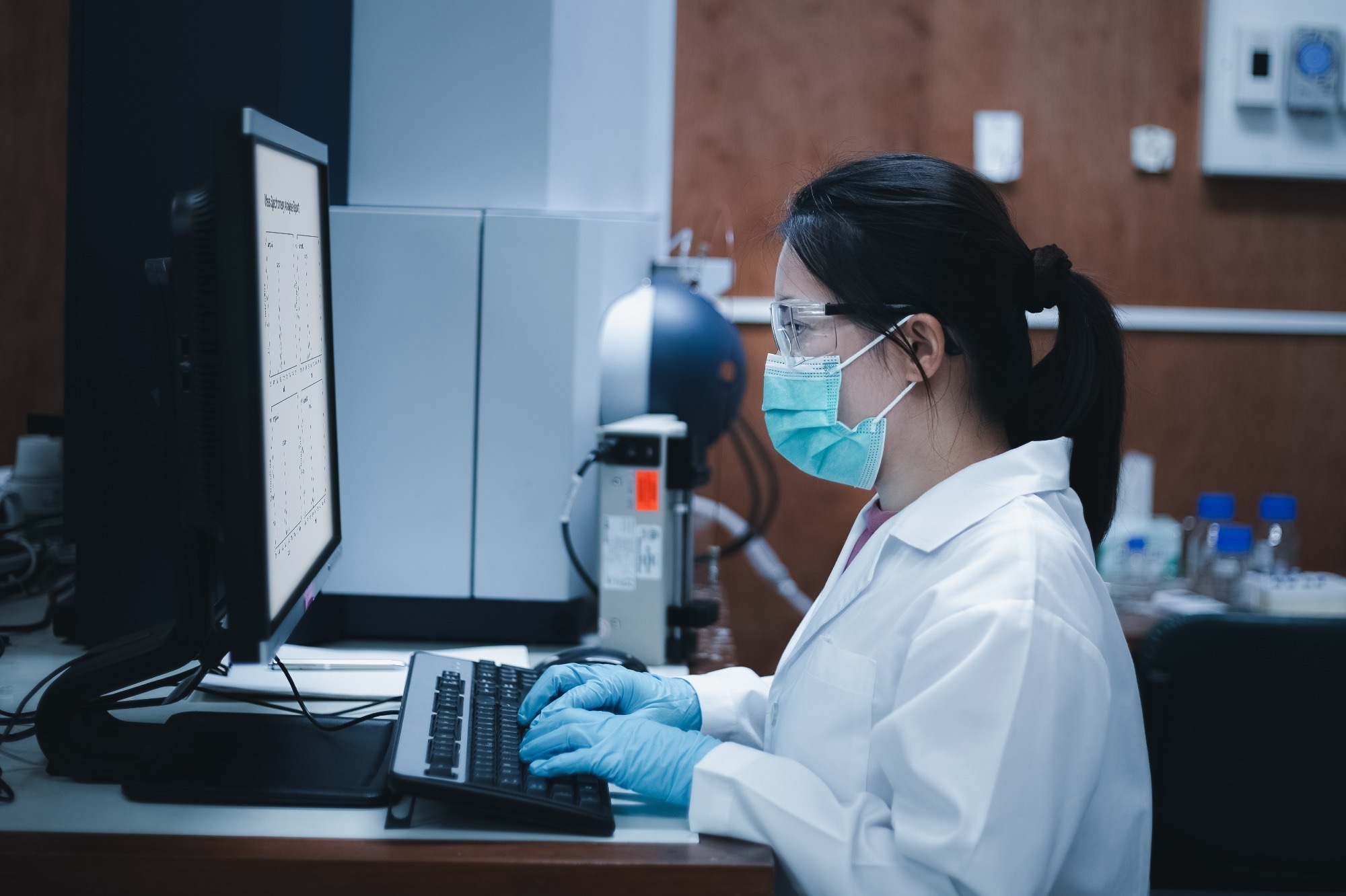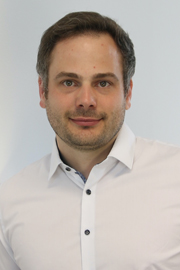Produced in Partnership with PlasmionJun 11 2024
In this interview, we speak with Jan-C. Wolf, the Chief Technology Officer of Plasmion, a pioneering company in chemical analysis. With a deep commitment to advancing mass spectrometry, Jan shares insights into Plasmion's groundbreaking SICRIT® technology, its integration with existing instruments, and its transformative applications across various industries.
Join us as we explore how SICRIT is reshaping the landscape of chemical analysis and making significant strides in fields such as medical diagnostics and industrial quality control.
Please introduce yourself and describe your role at Plasmion. Could you give us an overview of Plasmion, its core technologies, and the markets it serves?
My name is Jan Wolf, I am the CTO of Plasmion, a young and growing company specializing in simplifying chemical analysis. Our core technology is called SICRIT (Soft Ionization by Chemical Reaction in Transfer).
While traditionally used in classical lab settings, SICRIT allows for mass spectrometry to be utilized in industrial environments by enabling direct measurements without the need for sample preparation.
Could you briefly describe the core principle behind the SICRIT Ion Source Technology and how it enhances the capabilities of existing LC-MS systems?
The core principle behind the SICRIT ion source is that it operates through flow-through ionization based on a dielectric barrier discharge. As analytes are drawn into the mass spectrometer by its vacuum, they are ionized while passing through the cold plasma of our ion source.
This mechanism results in higher sensitivity compared to commonly used ion sources, enabling the analysis of various previously inaccessible molecules. However, the most significant advantage is the simplicity of the analysis process.
For example, analyzing a coffee bean traditionally requires grinding or extracting its contents for mass spectrometry. With the SICRIT ion source, you can simply hold the coffee bean in front of the mass spectrometer and the ion source. Instantly, the source will pick up all the aroma components of the coffee bean.
SICRIT®: A new and unique miniaturized ion source technology #explanationvideo #massspectrometry
SICRIT is noted for its increased sensitivity and no sample preparation requirements. How do these features translate into practical benefits for users in laboratory and industrial settings?
The increased sensitivity and broad range of ionization, from polar to non-polar substances, enable laboratories to achieve better results with fewer measurements, significantly enhancing their efficiency. Eliminating the need for sample preparation could be a game-changer in industrial settings like food or pharma.
With our technology, there is no need for technicians, lab personnel, or CTAs to take and prepare samples or perform extractions. You can place the mass spectrometer directly on the conveyor belt and perform online mass spectrometry without any sample preparation. This 24/7 routine operation ensures product quality and safety, benefiting both producers and consumers.
The direct desorption module enables quantitative and fully automated direct measurements, which is a unique advantage over other methods. Can you explain how this module integrates with the SICRIT Ion Source to simplify the analysis process?
The direct desorption module allows you to leverage the advantages of the SICRIT ion source while performing direct and fully quantitative measurements for solid, liquid, and gaseous samples. This capability is unique compared to other direct measurement methods.
You ensure an enclosed volume by injecting the sample manually with a syringe or fully automated with an auto-sampler into the module, which guarantees accurate quantitation. Additionally, this method prevents contamination from surrounding air, such as the perfume of the person operating the system.
Discuss the significance of being able to perform sensitive direct MS analysis without chromatography. How does this capability impact the speed and accuracy of chemical analyses, particularly in complex matrices like wastewater?
Direct mass spectrometry without chromatography enables a dramatic increase in throughput. For example, while a chromatography run might take 20 minutes, a direct injection can be completed in just 2 minutes. This approach is especially beneficial in high-throughput areas that handle thousands of samples.
Although the accuracy of screening without chromatography, particularly in complex matrices like wastewater, is not as high as with chromatography, it is still precise enough to determine whether a sample is clean or not. It can also be used as a pre-selection method to identify conspicuous samples that may undergo a subsequent chromatography run.
 Image Credit: S. Singha/Shutterstock.com
Image Credit: S. Singha/Shutterstock.com
Can you provide an example of how SICRIT has been successfully implemented in a real-world scenario, perhaps highlighting the direct liquid MS analysis of biofuels?
In a real-world scenario, the SICRIT technology screens ethanol used in beverages. Our system complements the in-house human sensory panel, providing additional support for their product evaluation process.
Ethanol samples of the lowest quality, deemed unsuitable for beverages, are repurposed as biofuels. While our system is not directly utilized for analyzing biofuels, this use case is tangentially related to it.
SICRIT boasts unique ionization capabilities that allow the analysis of problematic molecules that are difficult to ionize via traditional methods like ESI or APCI. Could you delve into how this has opened new possibilities in the field of mass spectrometry?
Do you recall the concerning news about Valsartan being contaminated with nitrosamines? With SICRIT technology, it would have been possible to detect both nitrosamines and the active ingredient Valsartan in a single mass spectrometry run, whereas traditional methods like ESI and APCI would require separate analyses for each.
Not only could this have prevented a major scandal, but it also marked a new era of understanding chemical processes in products. Because SICRIT can detect highly non-polar substances like alkanes, it has the capability to identify a wider range of contaminants compared to other ionization sources. Consequently, SICRIT is positioned to contribute to the production of safer consumer products and pharmaceuticals.
What are the next steps for Plasmion in terms of advancing the SICRIT technology? Are there new applications or enhancements we can expect in the near future?
Our overall goal is to simplify mass spectrometry and make it accessible to anyone – trained in mass spec or not. We are constantly working on easy-to-handle plug-and-play products combined with easy-to-operate software. Both are combined in our new HaVoc Sensory System. It features the SICRIT ionization technology and makes it operational in an industrial environment.
Since the launch of the SICRIT technology, what has been some of the feedback from your customers, and how has it influenced further developments?
Our most common feedback is: "It's too good to be true." And that's precisely what motivates us. We aim to simplify mass spectrometry as much as possible, which is why all our efforts are focused on creating plug-and-play, user-friendly solutions that deliver exceptional performance.
What challenges have you encountered in developing and implementing the SICRIT technology, and how have you addressed them?
Realizing that the unique geometry of our source and its associated benefits alone were insufficient to establish a market presence was an insight we did not have before founding our startup. To truly succeed in the market, our product must be able to solve prevailing issues faced by similar products and ideally offer better performance as well.
We are fortunate that we have achieved this with SICRIT, and we can convince others not only through the simplicity of our product but also through clear and transparent communication from our side.
As a leader in the sensor technology market, how does Plasmion envision the future of chemical analysis? What role will SICRIT play in shaping this future?
The future of chemical analysis will become so automated that it will seamlessly integrate into routine processes, operating as a behind-the-scenes robotic system to measure and control products or consumer goods. This automation will ultimately result in the production of better and safer products for consumers.
In our vision, SICRIT will play a significant role. It stands out as the only technology capable of conducting such analyses with superior performance.
Where can readers find more information?
About Dr. Jan-C. Wolf, CTO of Plasmion
 Jan holds a master’s degree in chemistry from the Technical University of Munich. He specialized in organic and analytical chemistry and took a doctoral degree (Ph.D.) at the Department of Analytical Chemistry headed by Professor Reinhard Niessner.
Jan holds a master’s degree in chemistry from the Technical University of Munich. He specialized in organic and analytical chemistry and took a doctoral degree (Ph.D.) at the Department of Analytical Chemistry headed by Professor Reinhard Niessner.
During this time he gained extensive knowledge in aerosol chemistry, instrument / method development, and the area of classical analysis, particularly in mass spectrometry. Besides, he independently conducted commissioned analyses for various industrial partners.
After graduation, Jan conducted a postdoctoral research at ETH Zurich (Switzerland) with Professor Renato Zenobi and became a leading expert in the field of new ionization methods for mass spectrometry, so-called ''ambient'' ionization.